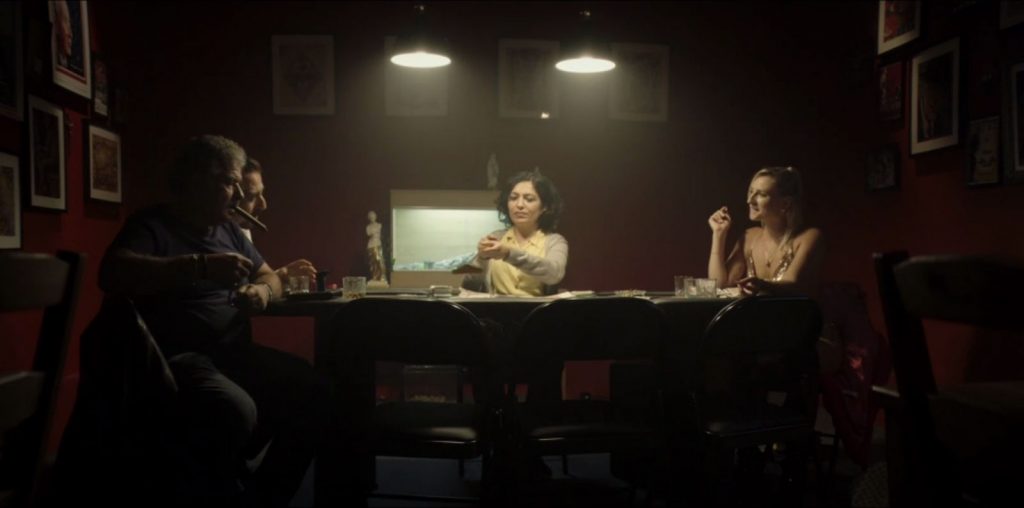
Adam Khalil and Bayley Sweitzer’s Empty Metal is a transgressive, long-form, disturbing, and politically sharp feature, bringing together digital video, and computer-generated imaging to form a think piece on the dangerous state of American politics.
The order in which the film is presented is dizzying, if somewhat inaccessible. A group of liberal punks, a native American activist, and a Rastafarian man are presented to us as if part of an alternate future, one where the only hope is “revelation,” suggesting that the world has already come to an end. The intermixed footage of police militarization in-action, gun training, and CGI reenactments of police violence grounds this contemporary culture as the setting for the apocalypse. The film’s content is visceral and varied — its form and content changes unpredictably throughout. Coupled with Éliane Radigue’s chilling and droning score reminiscent of the industrial groans of Lustmord’s soundtrack for First Reformed, the film settles into a hypnotizing tone.
The themes are reminiscent of Arthur Jaffa’s 2016 acclaimed montage video work Love is the Message, The Message is Death, which compiles footage of historic highs, lows, the hypocrisies and the contemporary events which frame the black experience in America. Khalil and Sweitzer’s film is less focused and determined, though it finds its strength in its statement through contrast and conjunction.
“…bringing together digital video, and computer-generated imaging to form a think piece on the dangerous state of American politics.”
Intermixing footage of political violence and uncertainty, the choice to center the film on a band of three unfocused punk musicians seems a strange one. Artist filmmakers have been attracted to found footage since the start of the medium, and Empty Metal takes kindly to this tradition. What makes this film unique is not the rapid-fire inclusion of found footage, but rather that it guides and confronts power structures through metaphor and confrontation. They’re represented by the leading group of the film — the punks. They have shaved heads, a new album, and wear silver grills on their teeth — one even has previously worked on a project called ‘girl cum.’ What this film excels in is executing a Bakhtinian “grotesque body,” whereby the powerful are confronted by low culture, represented by the bottom half of the body. Empty Metal’s particularly striking moment is when punk-youth Rosemary’s confrontation of modern terrorists, like Osama Bin Laden, is paired with the image of a used and soiled flushing toilet. The shot achieves a moral degradation and confrontation of the power normally held by their names.
Filmed between standard digital and video camcorder and computer-generated imaging, Empty Metal is an amalgamation and experimentation of form and content. Its final bibliography cites the work of Burroughs, to Seth Price, to the Indigenous Action Media. However, derivative of successful or influential artists, Empty Metal attains undeniable originality — though that doesn’t necessarily deem it accessible. Khalil and Sweitzer’s film is unique, but it remains unclear if it has the power and resonance behind it to take their points outside of the arthouse audience.

"…the choice to center the film on a band of three unfocused punk musicians seems a strange one."


